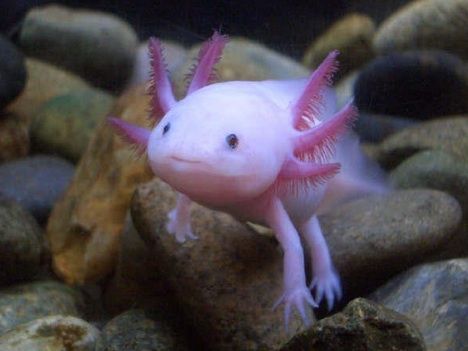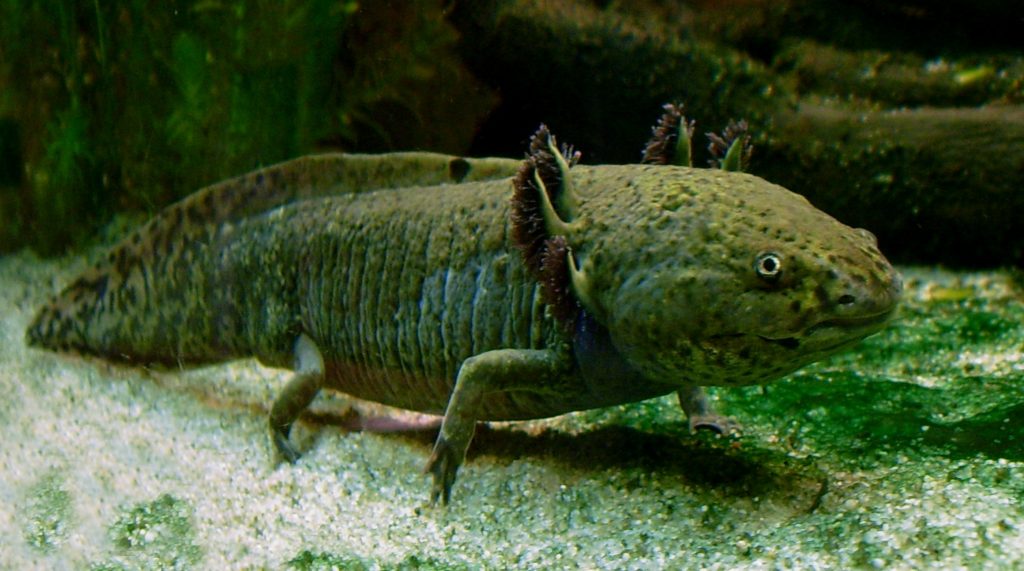Whether you are new to breeding axolotls or not, understanding its natural life span will provide a better knowledge on how to give them care.
Pet Road Test: Axolotl
 Axolotl is a type of salamander that originated from Mexico, particularly the lakes of Mexico. Hence, this is a unique characteristic from other species of salamander because it lives in the water for most of its life. Axolotls are typically placid in nature but they can be anti-social too. In fact, they find it difficult to interact with other amphibious species since they feed on the creatures that are smaller than them in size. For this reason, breeders prefer to keep them in tanks separate from other smaller creatures, even fellow axolotls.
Axolotl is a type of salamander that originated from Mexico, particularly the lakes of Mexico. Hence, this is a unique characteristic from other species of salamander because it lives in the water for most of its life. Axolotls are typically placid in nature but they can be anti-social too. In fact, they find it difficult to interact with other amphibious species since they feed on the creatures that are smaller than them in size. For this reason, breeders prefer to keep them in tanks separate from other smaller creatures, even fellow axolotls.
The average life span of an axolotl is between 10 to 15 years, depending on the living conditions. They are considered low to medium maintenance pets; hence, you should have no trouble breeding them provided that you follow the proper care recommended for them.
Appearance
The colors of axolotls might differ but there are certain similarities in their colors. The five most common colors seen on axolotls are as follows: mottled black, green, black, gold and white. The white axolotls are considered albinos. It is not uncommon to find white axolotls.
The physical features of an axolotl are comparable to that of a tadpole. They have a long tail, a fin that runs through the entire length of their back, and legs that are like that of a lizard. The common factor that differentiates the females from the males is their head. Female axolotls have a wider head than male counterparts.
Temperament and breeding
Axolotls become placid when they are bred inside a tank on their own. However, they do exhibit an aggressive behavior that makes them easily agitated when the tank is overcrowded. As mentioned above, they will also feed on other tank inhabitants, especially the ones smaller than them.
Feeding your Axolotl
The diet of axolotl is not very strict. In fact, you do not have to feed adult axolotls on a daily basis – thrice a week will do, provided that they have sufficient nutrients from their diet. For the baby axolotls, you can feed them small amounts of food throughout the day.
Axolotl health and lifespan
Axolotls are vulnerable to developing bacterial or fungal infections if you feed them the wrong kind of food, or when their living conditions aren’t right. One thing you need to focus on is the water quality inside the tank. You must set the water in an ideal temperature and must have the right water flow to avoid causing stress.
Space and maintenance
The best sized tank for axolotls is 60 cm. If you are planning to breed two axolotls, then go for a larger tank measuring up to 90 cm.
It is also important to pay attention to the gravels and substrates placed inside the tank. Use larger pebbles to ensure that they won’t be able to feed on them.
Getting started
 If you want to try out caring for a new pet, axolotls are a great choice. They are easy to care for and relatively inexpensive (most axolotls can be bought from $20 to $35). However, you should be ready to invest in a filtration system for the axolotl tank to ensure the ideal temperature and water quality inside the tank.
If you want to try out caring for a new pet, axolotls are a great choice. They are easy to care for and relatively inexpensive (most axolotls can be bought from $20 to $35). However, you should be ready to invest in a filtration system for the axolotl tank to ensure the ideal temperature and water quality inside the tank.

 Author and long-time animal lover. Sharing knowledge on pet care through experience and the written word.
Author and long-time animal lover. Sharing knowledge on pet care through experience and the written word.